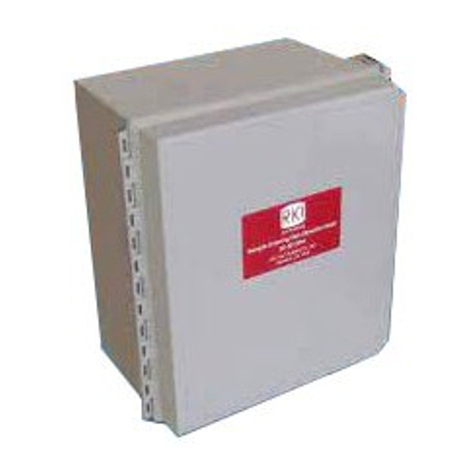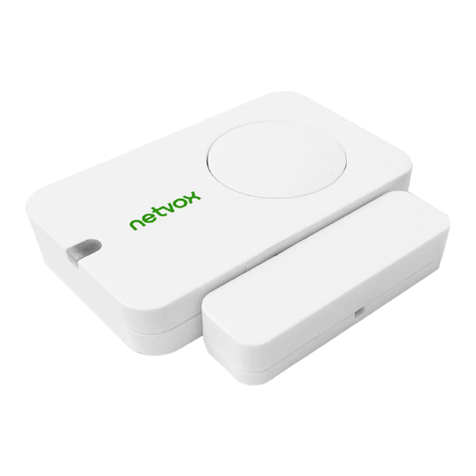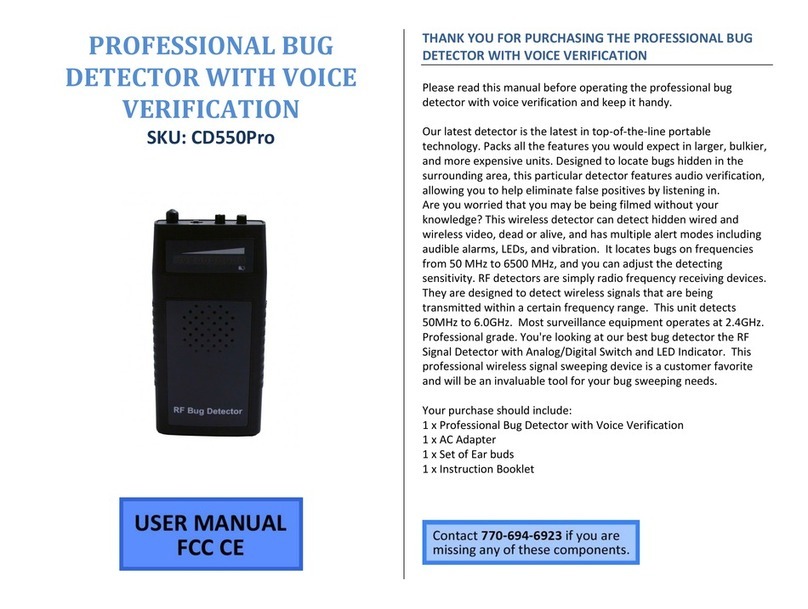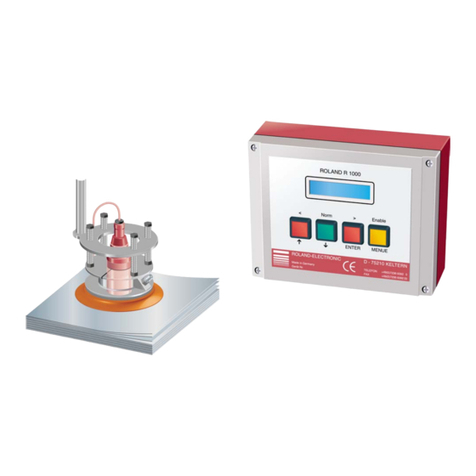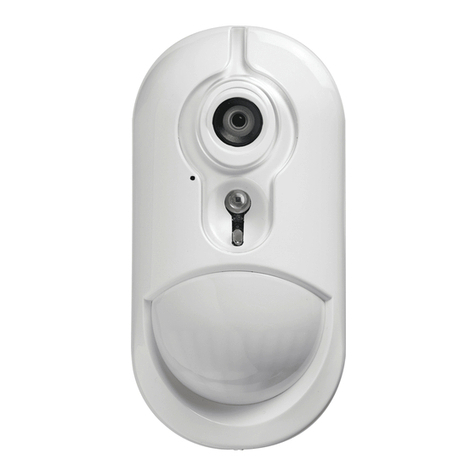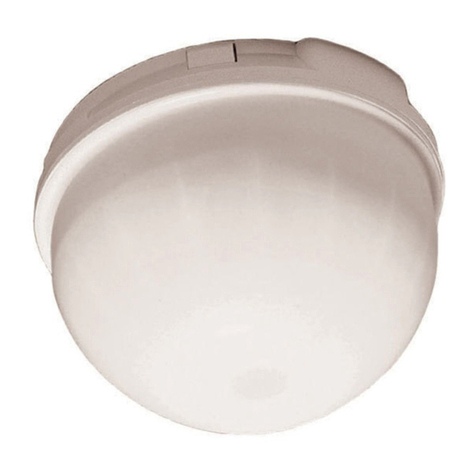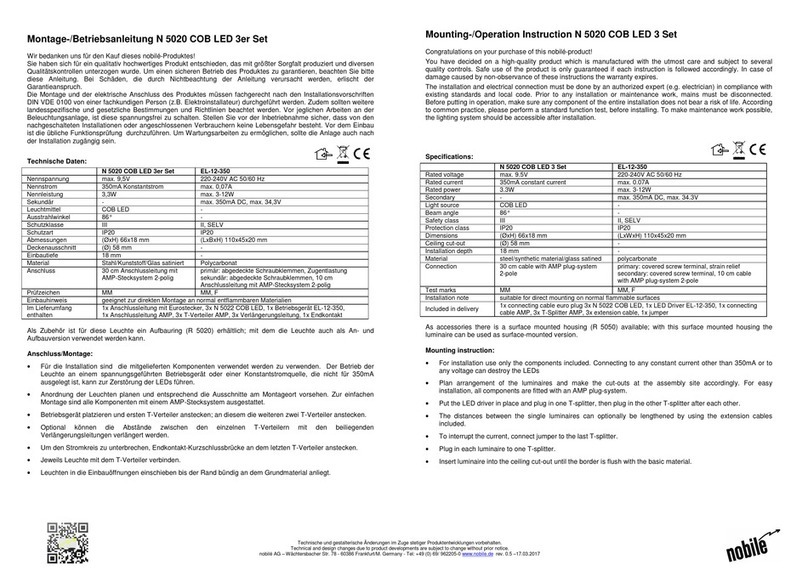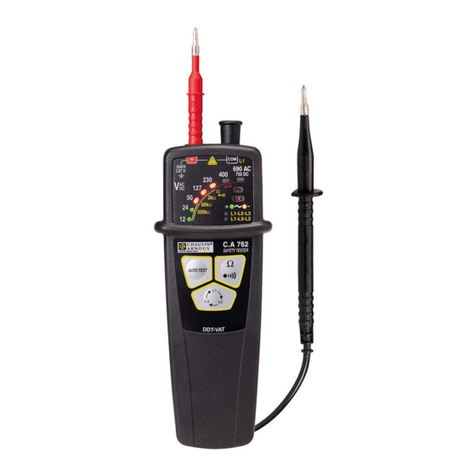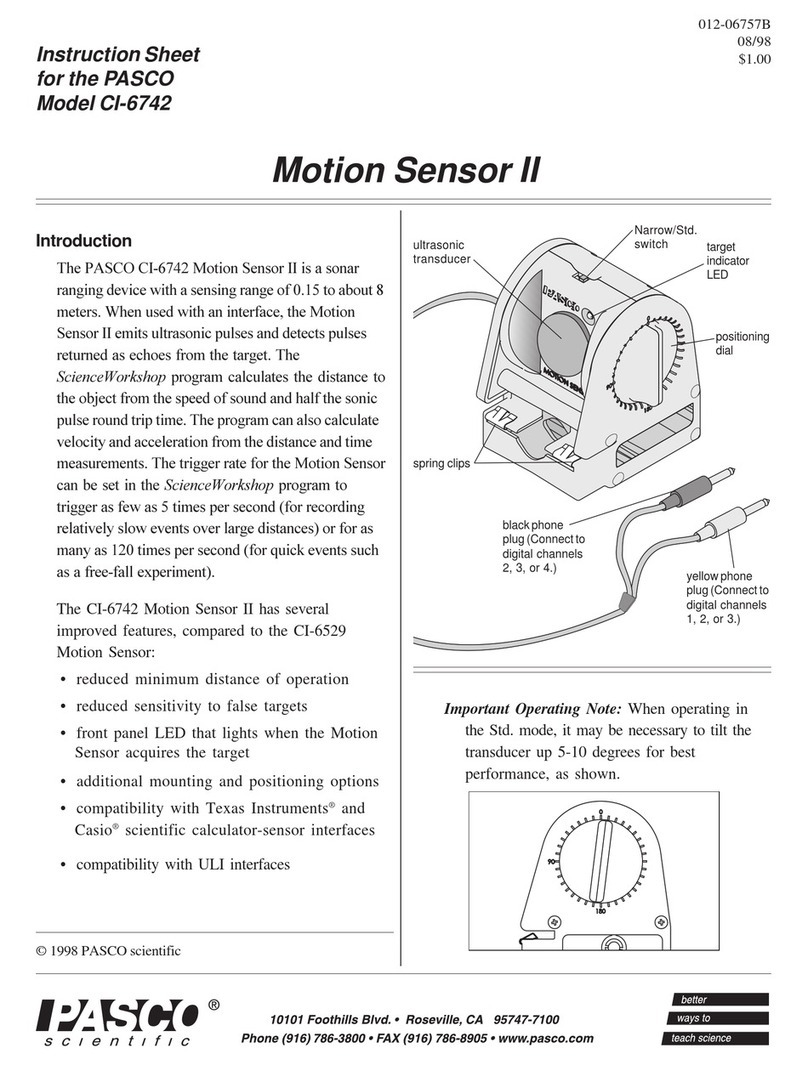Teledyne DM-20-08K10 User manual

DM-20-08K10
DM-20-05K10
Argus Detector User’s Manual
06 December 2012
03-032-20109-03
www.teledynedalsa.com

2 DM-20-08K10 and DM-20-05K10 Detector User's Manual
03-032-20109-03 Teledyne DALSA
© 2012 Teledyne DALSA. All information provided in this manual is believed to be accurate and reliable. No responsibility is
assumed by Teledyne DALSA for its use. Teledyne DALSA reserves the right to make changes to this information without notice.
Reproduction of this manual in whole or in part, by any means, is prohibited without prior permission having been obtained from
Teledyne DALSA.
About Teledyne Technologies and Teledyne DALSA, Inc.
Teledyne Technologies is a leading provider of sophisticated electronic subsystems, instrumentation and communication products,
engineered system s, aerospace engines, and energy and pow er generation system s. Teled yne Technologies’ op erations are p rimari ly
located in the United States, the United Kingdom and Mexico. For more information, visit Teled yne Technologies’ w ebsite at
www.teledyne.com.
Teledyne DALSA, a Teledyne Technologies company, is an international leader in high performance digital imaging and
semiconductors with approximately 1,000 employees worldwide, headquartered in Waterloo, Ontario, Canada. Established in 1980,
the company designs, develops, manufactures and markets digital imaging products and solutions, in addition to providing MEMS
products and services. For more information, visit Teledyne DALSA’s w ebsite at www.teledynedalsa.com.
Sales and Support
For further information not included in this manual, or for information on Teledyne DALSA’s extensive line of image sensing
products, please contact:
Teledyne DALSA Professional Imaging Division
High Tech Campus 27
5656AE Eindhoven
The Netherlands
Tel: +31 40 259 9000
Fax: +31 40 259 9005
Sales E-mail: sales.sensors@teledynedalsa.com
Web Site: www.teledynedalsa.com/ls/

DM-20-08K10 and DM-20-05K10 Detector User’s Manual 3
Teledyne DALSA 03-032-20109-03
Contents
1. System Precautions and Safety _____________________________________________________________________4
2. The Argus Detector _____________________________________________________________________________6
Detector Highlights............................................................................................................................................................6
Detector Performance Specifications .................................................................................................................................8
Certifications ......................................................................................................................................................................10
Mechanicals........................................................................................................................................................................11
3. Software and Hardware Setup______________________________________________________________________13
Setup Steps: Overview.......................................................................................................................................................13
Step 1. Detector Mounting.................................................................................................................................................14
Step 2. Ethernet Network Card: Install and Configure......................................................................................................15
Step 3. Connect Power, Ethernet, and Trigger Cables .......................................................................................................17
Step 4. Establish Communication with the Detector ..........................................................................................................21
Step 5. Detector Settings and Test Patterns.......................................................................................................................22
4. Detector Operation _____________________________________________________________________________24
Saving and Restoring Detector Settings ............................................................................................................................24
Binning ..............................................................................................................................................................................25
Imaging Modes and Timing...............................................................................................................................................27
Image Retrieval .................................................................................................................................................................33
Gain and Offset Adjustment ..............................................................................................................................................33
Noise vs. Gain....................................................................................................................................................................35
Detector Memory ...............................................................................................................................................................36
Line Rate ...........................................................................................................................................................................36
Exposure Time ...................................................................................................................................................................36
Image Height.....................................................................................................................................................................36
Verify Temperature and Voltage .......................................................................................................................................37
I / O Opto-couplers ............................................................................................................................................................37
Appendix A: All Commands _________________________________________________________________________39
Appendix B: Web GUI Interface ______________________________________________________________________42
Introduction .......................................................................................................................................................................42
Web GUI Access..................................................................................................................................................................45
Acquisition and Control .....................................................................................................................................................50
Firmware upgrade using the Web GUI..............................................................................................................................53
Appendix C: API Overview __________________________________________________________________________55
Appendix D: Enable and Use Telnet ___________________________________________________________________56
Appendix E: IP Address Information ___________________________________________________________________60
Appendix F: Troubleshooting ________________________________________________________________________61
Image Quality....................................................................................................................................................................63
Common Solutions.............................................................................................................................................................66
Specific Questions and Answers .........................................................................................................................................67
Revision History _________________________________________________________________________________69
Index ________________________________________________________________________________________70

4 DM-20-08K10 and DM-20-05K10 Detector User's Manual
03-032-20109-03 Teledyne DALSA
1. System Precautions and Safety
Safety Information
Installation Warning
The operators of this equipment are responsible for the safe and prudent installation of the detector in
their own system. All X-ray sources and controls, shielding, personnel safety monitoring devices, and
personnel safety precautions involved in the acquisition and display of data are the responsibility of the
user.
Safety Statement
The general safety precautions that follow must be observed during all phases of installation, operation,
service and repair of this system. Failure to comply with these precautions, or with specific warnings
noted in this manual, violates the safety standards of design, manufacture and the intended used of this
system. Teledyne DALSA assumes no responsibility for the user’s failure to comp ly with these
requirements.
Warning: This X-ray detector system, when installed, is subject to exposure from X-rays during
operation.
To ensure personnel safety, it is necessary that a radiation meter be used to check for radiation leakage
after installation of the digital detector in the end users system.
Teledyne DALSA assumes no responsibility for the proper installation of X-ray shielding, X-ray shield
enclosure testing, or safe and prudent operation of the detector system in the user’s installation. It is the
user’s responsibility to ensure that local and federal guidelines regarding the installation and operation of
X-ray sources are followed.
The voltage specifications must be strictly adhered to or the system will no longer be considered covered
under warranty.
Do not operate in an explosive atmosphere.
This system is not intrinsically safe for operation in explosive atmospheres.
The detector is NOT designed to be “fail safe.”
Provision for safe failure modes must be designed into the system in which the detector is used.
No User Serviceable Components
There are no components in the detector system that need to be replaced, modified, or adjusted by the
end user. Please contact Teledyne DALSA Support for assistance if needed.
Safety Warning: The detector has anti-tamper seals affixed to the sensor cover. Tampering with
this product voids the warranty and may degrade the detector's image quality, possibly resulting
in an unsafe condition.
This equipment generates and can radiate radio frequency energy and, if not installed and operated in
accordance with the instructions, may cause harmful interference to other devices in the area.

DM-20-08K10 and DM-20-05K10 Detector User’s Manual 5
Teledyne DALSA 03-032-20109-03
Disposal of Product
Dispose the unit in accordance with local regulatory guidelines.
Installation Precautions
Never connect or disconnect cables while power to the detector system is on. Damage to the detector
electronics will occur if the cables are connected and/ or disconnected while the detector's power is on.
Allow for sufficient airflow to keep the detector in the operating temperature range.
Service by Qualified Personnel Only
This equipment is to be installed by a qualified technician only. The system can only be used in
conjunction with a properly installed X-ray source with the appropriate shielding and a properly
configured computer workstation that meets the minimum system requirements discussed later in this
manual.
Detector Maintenance
Before performing any of the following operations, make sure that the power to the detector is switched
OFF.
Scheduled Maintenance
Detector is built for long-life, maintenance free operation. Periodically inspect the detector environment
to include the following:
Inspect the cables for cuts or kinks, and verify that the cables are properly secured to the detector.
Inspect chassis ground connection and verify it is tightly secured to the chassis.

6 DM-20-08K10 and DM-20-05K10 Detector User's Manual
03-032-20109-03 Teledyne DALSA
2. The Argus Detector
Detector Highlights
Teledyne DALSA has a long history in providing X-ray detectors to the medical market, both for
standard and application specific markets. Our certified manufacturing, technology core and history in
providing solutions to the medical market helps us to provide you with a robust solution that gives you a
competitive edge in the market. Our complete and integrated solution, from sensor design and
fabrication, detector design and manufacturing, image acquisition and software expertise makes
Teledyne DALSA a one stop solution for your detection technology needs and provides you with a
reliable source for your imaging needs.
Features
Outstanding image quality.
Low sensor readout noise provides images with high clarity.
High dynamic range and a large sensor full-well results in high contrast images.
16-bit ADC for high precision image capture.
Flexible and robust modular form factor facilitates ease of integration into existing X-Ray dental
systems.
Assembled with advanced MEMS fabrication techniques for high resolution.
Field of view 15 cm, 22 cm and 44 cm (future).
Anti-blooming, preserves image integrity on the edges and in bright spots of the image.
Ethernet interface for ease of integration.
Custom scintillator available.
TDI X-Ray Technology
The Argus platform incorporates Teledyne DALSA’s patented TDI technology for high detective
quantum efficiency (DQE) and image quality. Time Delay & Integration (TDI) is based on line scan
technology and provides dramatically increased responsivity compared to other scanning methods. It
permits greater scanning speeds in low exposure levels, or allows reduced exposure levels (and costs) at
conventional speeds.
High Spatial Resolution
Argus scanning detectors provide a large field of view and include high resolution scintillator technology
and standard Ethernet connectivity, allowing images to be ported directly to a computer for image
processing.
Reliable operation and image quality are pivotal to the success of your business. As such we have utilized
all the latest available technologies, to create a product that provides highest image quality as well as
detector reliability.

DM-20-08K10 and DM-20-05K10 Detector User’s Manual 7
Teledyne DALSA 03-032-20109-03
Robust Quality –Radiation Hardened
Argus utilizes the latest Teledyne DALSA imaging and sensor fabrication technologies. Our radiation
hardened sensor fabrication process ensures longevity of our product and an image quality that is
immune to X-ray radiation degradation over time. This means you will be able to acquire the same high
quality images over and over, and get consistent results over the lifetime of your modality.
In addition, Argus utilizes the latest advancements in MEMs technology in order to minimize the gap
between the adjacent sensors (less than 75µm). This also benefits our detectors in terms of planarity, so
that the same high image quality is maintained throughout the whole field of view of the detector. Using
MEMS technology, seamless detectors with very high resolution and large field of view become possible.
Applications
Panoramic dental and cephalometric applications
Veterinary scanning
Scientific imaging
Trauma X-ray (full body X-ray scan)
Pharmaceutical inspection
Mammography
Models
The Argus detector is available in the following configurations:
Table 1: Detector Models Overview
Model Number
Description
DM-20-08K10-00-R
8k resolution, general radiography
DM-20-08K10-50-R
8k resolution, high resolution, advanced scintillator
DM-20-05K10-00-R
5k resolution, Panoramic applications

8 DM-20-08K10 and DM-20-05K10 Detector User's Manual
03-032-20109-03 Teledyne DALSA
Detector Performance Specifications
Table 2: Detector Performance Specifications
Features
Specification
Sensor Type
Teledyne DALSA TDI CCD
Physical Resolution
8160 (H) x 256 (V) CEPH model
5580 (H) x 256 (V) PAN model
Imaging Area
15 cm, 22 cm, and 44 cm (future)
Spatial Resolution
7 lp / mm (typical, 2 x 2 binning mode)
9 lp / mm (typical, 2 x 2 binning mode—advanced scintillator model)
Binning Modes
2 x 2, 3 x 3, 4 x 4, 5 x 5, 6 x 6
Dynamic Range
> 80 dB
Data Output Format
16-bits GigE
X-Ray Energy Range
Up to 90 kVp, typical
Antiblooming
10x (limited to 2 x 2 binning mode)
Physical
Phosphor Type
Fiber Optic Plate with CSI scintillator (others available upon request)
Pixel Size
27 µm x 27 µm
Outputs, per CCD
1
Optical Size
150 mm, 221 mm, or 442 mm x 6.9 mm
Dimensions
254 W x 84 H x 46 D mm
Mass
700 g
Operating Temperature
10 °C to 40 °C
Storage Temperature
0 °C to 60 °C
Dead Imaging Space between Dice
< 75 µm
Speed
Maximum Line Rate
2 kHz, all binning modes
CCD Data Rate / Readout Speed
10 MHz, typical
Connectors
Data Interface
RJ-45 Ethernet
External Control
4-pin USB-B type
Power
DC connector
Power Specifications
Input Voltage Requirement
+12 VDC (±10%), < 50 mV rms ripple, 2 Amps
Power Consumption
15 W max
Regulatory Compliance
CE and RoHS
EU RoHS Declaration (Document #03-097-20049)
China RoHS EIP Disclosure Record (Document #03-097-20050)

DM-20-08K10 and DM-20-05K10 Detector User’s Manual 9
Teledyne DALSA 03-032-20109-03
Table 3: Sensor Cosmetic Specifications
Sensor Cosmetic Specifications
Measurement
Tolerance
CEPH DIE (11 cm)
PAN DIE (5 cm)
Maximum number of column defects
allowed per die
Defective: 4 columns.
Non-responsive: 2 columns.
Defective: 2 columns.
Non-responsive: 1 column.
Location and spacing restrictions
The minimum separation between non-responsive columns is 3
columns.
Maximum three adjacent defective columns are allowed.
Adjacent non-responsive and defective columns are not allowed.
Definitions
Defective column
Light responsive column outside FPN (1% of SAT) and PRNU spec (10% of SAT).
Non-responsive
column
Column signal level does not change with light intensity. At average response of 50% of
sensor SAT, the signal from the column is either greater than 90% or smaller than 5% of Sat
Output.
Test Conditions
TDI, 2 x 2 binning, 380 Hz.
Figure 1: 22 cm Sensor Pass / Fail Criteria

10 DM-20-08K10 and DM-20-05K10 Detector User's Manual
03-032-20109-03 Teledyne DALSA
Certifications
Table 4: EMI / EMC Compliance Standards
Compliance
The CE mark evaluation of the DM-20-0xK10 X-Ray sensitive detector modules, manufactured by Teledyne DALSA
Inc., met the following requirements:
EN 55022, EN 55011, ICES-003, CISPR 22, CISPR 11, and FFC Part 15 (Class A) Radiated Emissions Requirements,
and EN 55022 and CISPR 22 (Class B) Communications Line Conducted Emissions Requirements, and EN 61000-6-1
Immunity to Disturbances.
Notes on the EMI / EMC Compliance:
ARGUS is an open frame detector module which is intended to be integrated into a system. As such, it
passed the Class A requirements (with Ferrite Beads installed in the power and data cables*). We
anticipate that with proper shielding the enclosed detector will pass the Class B requirements.
*A Steward 28A2026 Ferrite Bead was installed on the Ethernet cable and Steward 28A3851 bead had 2
turns of the DC cable placed in it.

DM-20-08K10 and DM-20-05K10 Detector User’s Manual 11
Teledyne DALSA 03-032-20109-03
Mechanicals
[ADD MECHANICAL HERE]
Figure 2: Argus CEPH Mechanical
Note: A mechanical step file (3D model) is available for download from the Teledyne DALSA Web site
(available from the d etector’s prod u ct p age here) or from your Support contact (request document #03-
129-20037).
7(/('<1(
NOTES:
1. UNITS: MILLIMETERS.
75B0.15
(7)
(5.4) (220)
(25.6) 200B0.30
(253.6)
(32)
(138)
ACTIVE AREA
(7 X 220)
DETECTOR MOUNTING
P3.4 ZTHRU
(4X)
(46)
ETHERNET
CONNECTOR
POWER
CONNECTOR
(35)
(84)

12 DM-20-08K10 and DM-20-05K10 Detector User's Manual
03-032-20109-03 Teledyne DALSA
[ADD MECHANICAL HERE]
Figure 3: Argus PAN Mechanical
1
1
2
2
3
3
4
4
A A
B B
UNLESS OTHERWISE SPECIFIED
1. UNITS: MM
2. DRAWING PER
ASME Y14.5M-1994
3. TOLERANCES:
LINEAR ±0.15
ANGLES ±0.5
SURFACE FINISH
AUTHOR
APPROVED BY
APPLICATION/PROJECT
TITLE
DWG NO.
PART NO.
REV
SIZE
SCALE
VALID WHEN PRINTED ON SIZE PAPER
OF
PROPRIETARY
THIS DOCUMENT AND THE INFORMATION IT CONTAINS ARE PROPRIETARY TO TELEDYNE DALSA INC.. THIS DOCUMENT
MUST NOT BE DUPLICATED, OR ITS CONTENT USED OR DISCLOSED (IN WHOLE OR IN PART) WITHOUT PERMISSION
FROM TELEDYNE DALSA INC.
3.2
SHEET
M. OLA
DIMPLE
JUL 31/2012
02
NTS
DM-20-05K10-
605 McMurray Road
Waterloo, ON
CANADA, N2V 2E9
Phone: (519) 886-6000
Fax: (519) 886-8023
www.teledynedalsa.com
THIRD ANGLE PROJECTION
DIMPLE CAMERA ASSEMBLY
B
11
B
03-129-20074
00-R
TELEDYNE
A Teledyne Technologies Company
DALSA
DATE
REV DESCRIPTION DATE DWN. BY
NOTES:
1. UNITS: MILLIMETERS.
01 UPDATED 3D MODEL, ADDED DIMENSIONS AND CAMERA PART NUMBER AUG 27/2012 MLO
750.15
(7)
(5.4) (151)
(25.6) 200 0.30
(253.6)
(32)
(172.58)
ACTIVE AREA
(7 X 151)
DETECTOR MOUNTING
3.4 THRU
(4X)
DETECTOR MOUNTING
M3x0.5 - 6H 6 MIN
(2X THIS SIDE, 2X FAR SIDE)
(32)
(46)
200 0.30
ETHERNET
CONNECTOR
POWER
CONNECTOR
(35)
(84)
02 UPDATED CAMERA PART NO. SEP 12/2012 MLO

DM-20-08K10 and DM-20-05K10 Detector User’s Manual 13
Teledyne DALSA 03-032-20109-03
3. Software and Hardware Setup
Minimum System Requirements
To achieve best system performance, the following minimum requirements are recommended:
GigE network adapter: 100 Mbit Ethernet port.
Operating system: Windows XP.
Setup Steps: Overview
Take the following steps in order to setup and run your detector system. They are described briefly below
and in more detail in the following sections.
1. Mount Detector
Refer to page 14 for a description on mounting the detector.
2. Install and Configure Ethernet Network Card
If your host computer does not have a Gigabit network adapter or equivalent (PCI bus Gigabit NIC)
already installed, then you need to install one.
For Gigabit performance we recommend the Intel PRO/ 1000 MT adapter, or equivalent. Follow the
manufacturer’s installation instru ctions. Refer to page 15 for a description of installing and configuring a
GigE Ethernet network card.
3. Connect Power, Ethernet and I/O Cables
Connect a power cable from the detector to a +12 VDC (±10 %) power supply.
Connect the Ethernet cable from the detector to the computer Ethernet jack.
If using the external signals connect the external control cable to the detector.
Refer to page 17 for a description of the connectors.
4. Establish communicating with the detector
Establish communication with the detector. Refer to page 17 for a description on communicating with the
detector.
5. Check detector settings and test pattern
Check the detector settings and acquire a test pattern. Refer to page 22 for a description of viewing the
detector settings and acquiring a test pattern.
6. Operate the Detector
At this point you are ready to start operating the detector in order to acquire and retrieve images, set
detector functions, and save settings. Refer to page 24 for a description of detector operations.

14 DM-20-08K10 and DM-20-05K10 Detector User's Manual
03-032-20109-03 Teledyne DALSA
Step 1. Detector Mounting
Warning: During mounting and installation, ensure that the flex cables (highlighted below) do not come
into contact with objects. In addition, do not apply pressure to the sensor section of the module assembly.
Stress put on the sensor assembly may result in the flex cable disconnecting from the sensor assembly.
Touching the flex cables of the sensor assembly may break the connections within the sensor assembly.
Failure to follow these warnings may result in the intermittent or complete failure of the module and / or
sensor.
Note: This diagram shows the placement for scanning in a counter-clockwise direction. For clockwise
scanning, mount the detector with the cable connectors facing down.
Figure 4: Mounting and Scanning Direction
Detector Movement
Mounting (4x)
Mounting (4x)
Cable connectors
Detector Movement
X-Ray
Rotation
Direction
Panoramic Imaging Cephalometric Imaging
Scanning
direction
(detector
moving
direction)
X-Ray
Top view with detector mounted as shown above
DETECTOR
DETECTOR
Torque: 10 in.lbs (1.1N.m)
Torque: 10 in.lbs (1.1N.m)
flex cable
flex cable

DM-20-08K10 and DM-20-05K10 Detector User’s Manual 15
Teledyne DALSA 03-032-20109-03
Step 2. Ethernet Network Card: Install and
Configure
Install Network Card
The following network card has been tested and is recommended for use with this detector: Intel
Pro/ 1000 MT Desktop Adapter (33-MHz, 32-bit PCI). Order Code: PWLA8391GT (single packs). Follow
the m anu factu rer’s recom m end ations to install this card in the host PC.
Configure Network Card
The configuration shown here uses the Windows XP operating system as the host platform.
The detector communicates using the Ethernet connection and employs the static IP address:
192.168.5.100 (default).
To configure the network card from the host PC:
1. In the Start menu under ―Control Panel‖ select ―Netw ork Connections,‖ and configure the
network card as follows:
2. Select the installed network card and click on ―Change settings of this connection .‖
3. Enable the ―Internet Protocol (TCP/ IP)‖ option only.
Figure 5. Internet Protocol
4. With ―Internet Protocol (TCP/ IP)‖ selected , click on the ―Properties‖ button.

16 DM-20-08K10 and DM-20-05K10 Detector User's Manual
03-032-20109-03 Teledyne DALSA
5. Select ―Use the following IP ad d ress‖ and set the IP address to any address in this subnet other
than 192.168.5.100, which is used by the detector. In the example below, the address 192.168.5.50
is used.
6. Set subnet to: 255.255.255.0 and click on ―OK.‖
Figure 6. IP Address
7. Click ―OK‖ to save settings
8. Click on ―Configu re‖ button and select ―Advanced ‖ tab
9. Enable ―Jum bo Fram es‖ to greater than 9000 bytes. If your NIC does not support jumbo packets
the image transfer speed will be slower.

DM-20-08K10 and DM-20-05K10 Detector User’s Manual 17
Teledyne DALSA 03-032-20109-03
Figure 7. Jumbo Frames
10. Click ―OK‖ to save settings
Step 3. Connect Power, Ethernet, and Trigger
Cables
The use of cables types and lengths other than those specified may result in increased emission or
decreased immunity and performance of the detector.
Figure 8: Input and Output, trigger, and Power Connectors

18 DM-20-08K10 and DM-20-05K10 Detector User's Manual
03-032-20109-03 Teledyne DALSA
WARNING! Grounding Instructions
Static electricity can damage electronic components. Please discharge any static electrical
charge by touching a grounded surface, such as the metal computer chassis, before performing
any hardware installation.
Power Connector
WARNING:It is extremely important that you apply the required voltages to your detector.
Incorrect voltages may damage the detector.
Input voltage requirement: +12 VDC (± 10%), 2 Amps. A Class 2 limited current supply is also
recommended for use with this product.
Figure 9: 2-pin DC Power Plug—Power Connector, cable side
Table 5. Power Plug Pinout
Pin
Description
1—central pin
Supply voltage—+12 VDC ± 10%, 2A min
2—side pin
Ground
The detector requires a single voltage input +12 VDC ±10 %, 2 amps. The detector meets all performance
specifications using standard switching power supplies, although well-regulated linear supplies provide
optimum performance.
The detector includes an over voltage and reverse voltage protection circuit. Reset the protection circuit
by shutting down or disconnecting the power supply.
To build your own power cable, solder a red and black wire as shown to the DC Locking Miniature
Power Plug Pins (2.5 mm, Switchcraft part # 760BK).
Figure 10. Power Cable Drawing
!
!

DM-20-08K10 and DM-20-05K10 Detector User’s Manual 19
Teledyne DALSA 03-032-20109-03
!
Figure 11. Power Cable Drawing
CW- LOCK
CCW- UNLOCK
Figure 12. Locking Direction
WARNING: When setting up the detector’s power supplies follow these guidelines:
Apply the appropriate voltages.
Protect the detector with a 2 amp slow-blow fuse between the power supply and the detector.
Do not use the shield on a multi-conductor cable for ground.
Keep leads as short as possible in order to reduce voltage drop.
Use high-quality linear supplies in order to minimize noise.
Note: If your power supply does not meet these requirements, then the detector performance specifications are not
guaranteed.
Ethernet Connector and Ethernet LED
The detector uses an RJ45 connector and a standard Cat 5 cable. The device supports 10 / 100 / 1000
Mbit/ s speeds.
Note: Router connection not supported. Connection to a network switch for a single detector is
supported.
LEDs
The LEDs on the detector display the state or the Ethernet and data connections.

20 DM-20-08K10 and DM-20-05K10 Detector User's Manual
03-032-20109-03 Teledyne DALSA
Figure 13. Ethernet and Data LEDs
Ethernet Connection LED
Steady green indicates that an Ethernet connection is successfully established. No LED lights means that
there is no connection.
D21 - GREEN: Established Ethernet connection at 100 Mb/ s.
D22 - GREEN: Established Ethernet connection at 1 Gb/ s.
Data Transmission LED
Flashing red indicates that the detector is transmitting or receiving data.
D19 - RED: Data receive in progress.
D20 - RED: Data transfer in progress.
Trigger Connector: External Input
The detector has two control signals, TRIGGER and ACTIVE. A 4-pin connector is used for the control
signals.
The external signals are opto-isolated from the rest of the detector, The input range is from 2.5 V to 12 V,
2 mA minimum. Information on the optocoupler can be found on page 37.
Figure 14. External I/O Connector
Figure 15. External Trigger Cable
B-Cable USB open ended, 2 m. Manufacturer’s part # AK673-OE-R. DIGI-KEY cable part # AE1470-ND.
100Mbit/s 1Gbit/s Rx Tx
D20
D19D22D21
PIN1 –CAMERA READY
PIN2 –TRIGGER (WHITE)
PIN3 –ACTIVE (GREEN)
PIN4 –GND (BLACK)
1
43
2
Pin #
Signal Name
1
Detector Ready
2
TRIGGER
3
ACTIVE
4
GND
This manual suits for next models
1
Table of contents
Other Teledyne Security Sensor manuals
Popular Security Sensor manuals by other brands

AECO
AECO QMP000040 manual
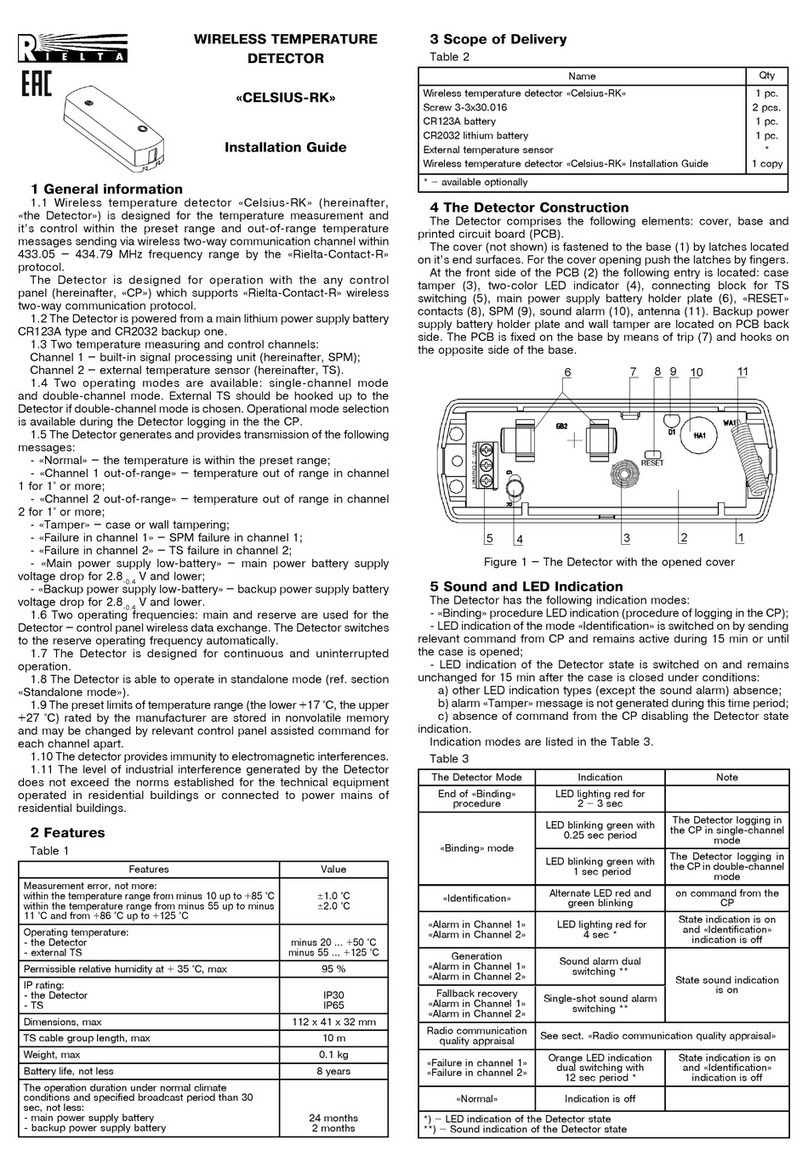
Rielta
Rielta CELSIUS-RK installation guide
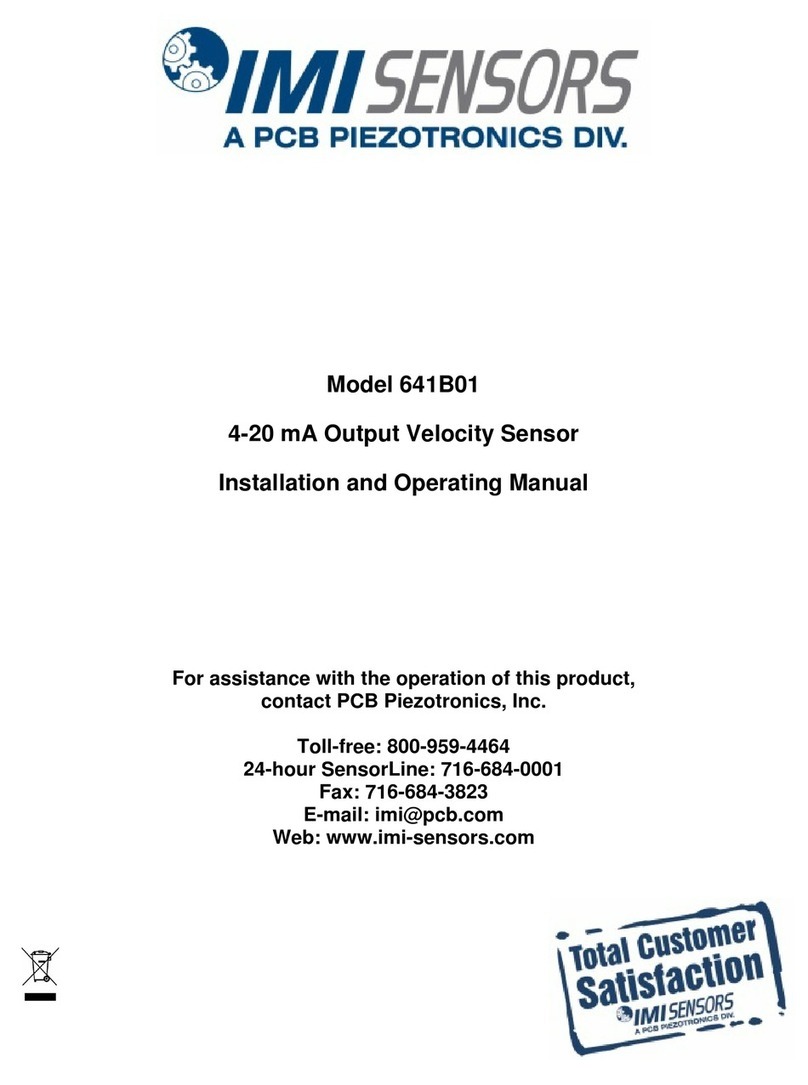
PCB Piezotronics
PCB Piezotronics IMI SENSORS 641B01 Installation and operating manual
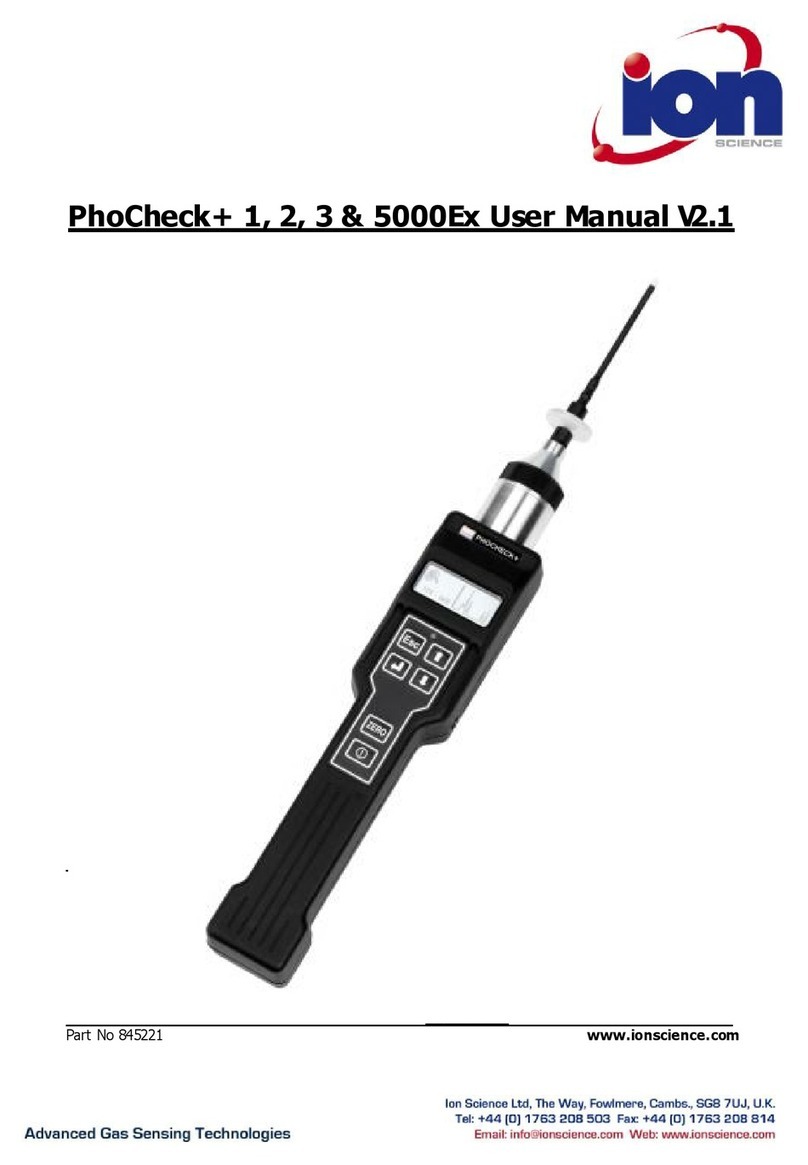
ion science
ion science PhoCheck+ Series user manual
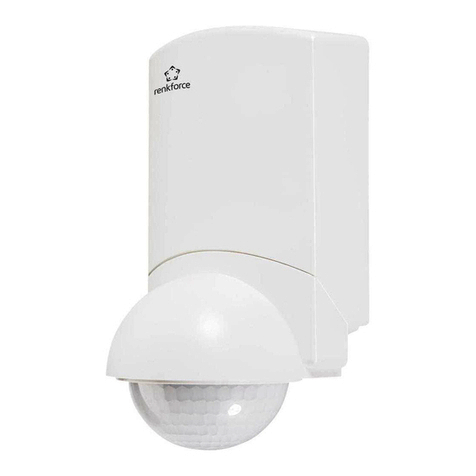
Renkforce
Renkforce 1362922 operating instructions
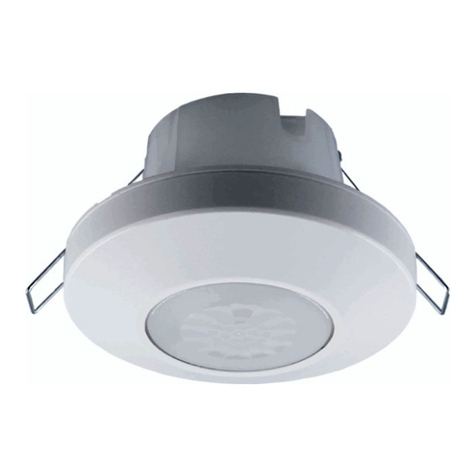
Theben
Theben TIMEGUARD PDFM361AB Installation & operating instructions




